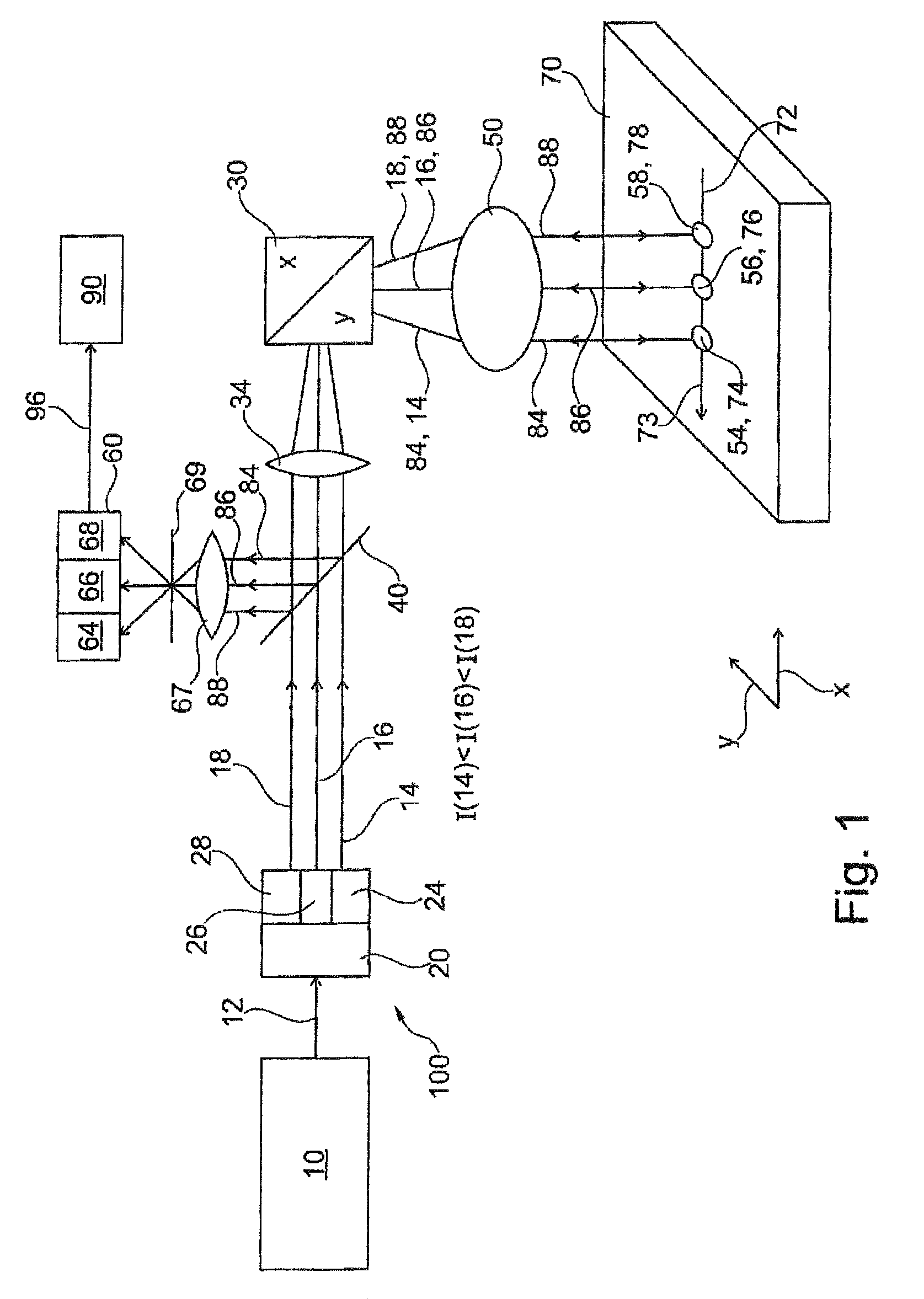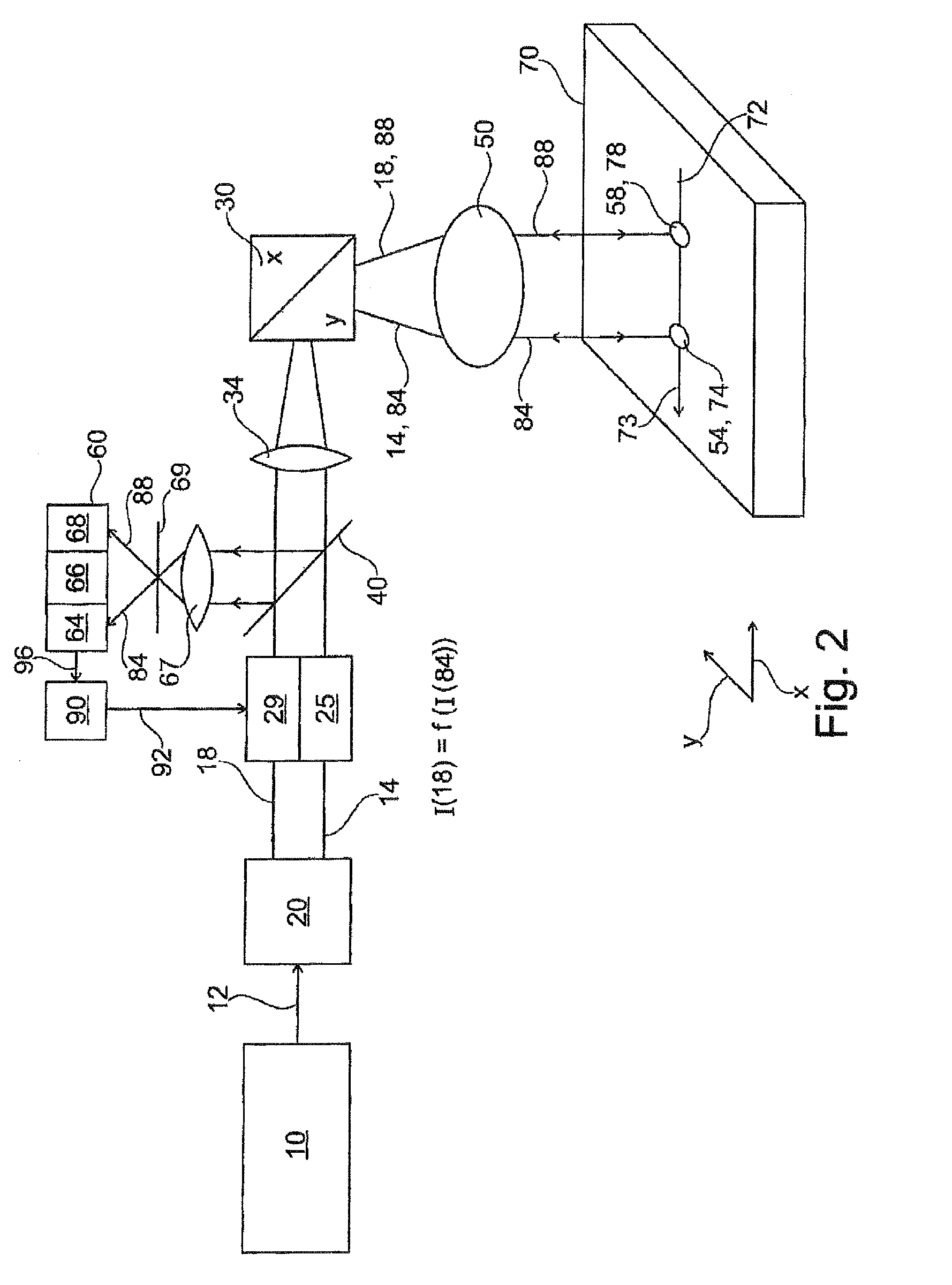Method for scanning microscopy and scanning microscope
- Summary
- Abstract
- Description
- Claims
- Application Information
AI Technical Summary
Benefits of technology
Problems solved by technology
Method used
Image
Examples
Embodiment Construction
[0040]A first embodiment of a method according to the invention and of a scanning microscope 100 according to the invention is explained with reference to FIG. 1. A light source 10, in particular a laser, for emitting excitation light 12, optical means (20, 30, 40, 50) and also a detector unit 60 are shown therein as essential components.
[0041]As part of the optical means, firstly an optical separating device 20 is present, which separates the excitation light 12 into a plurality of illumination beams (14, 16, 18), wherein the illumination beams (14, 16, 18) serve for generating a plurality of different illumination spots (54, 56, 58) on a specimen 70.
[0042]A further component part of the optical means is a main chromatic splitter 40, through which the illumination beams (14, 16, 18) pass. Thereafter, the illumination beams (14, 16, 18) pass via an optical unit 34 onto a scanning device 30, by which they are scanned over the specimen 70 according to the invention such that the illum...
PUM
 Login to View More
Login to View More Abstract
Description
Claims
Application Information
 Login to View More
Login to View More - R&D
- Intellectual Property
- Life Sciences
- Materials
- Tech Scout
- Unparalleled Data Quality
- Higher Quality Content
- 60% Fewer Hallucinations
Browse by: Latest US Patents, China's latest patents, Technical Efficacy Thesaurus, Application Domain, Technology Topic, Popular Technical Reports.
© 2025 PatSnap. All rights reserved.Legal|Privacy policy|Modern Slavery Act Transparency Statement|Sitemap|About US| Contact US: help@patsnap.com



